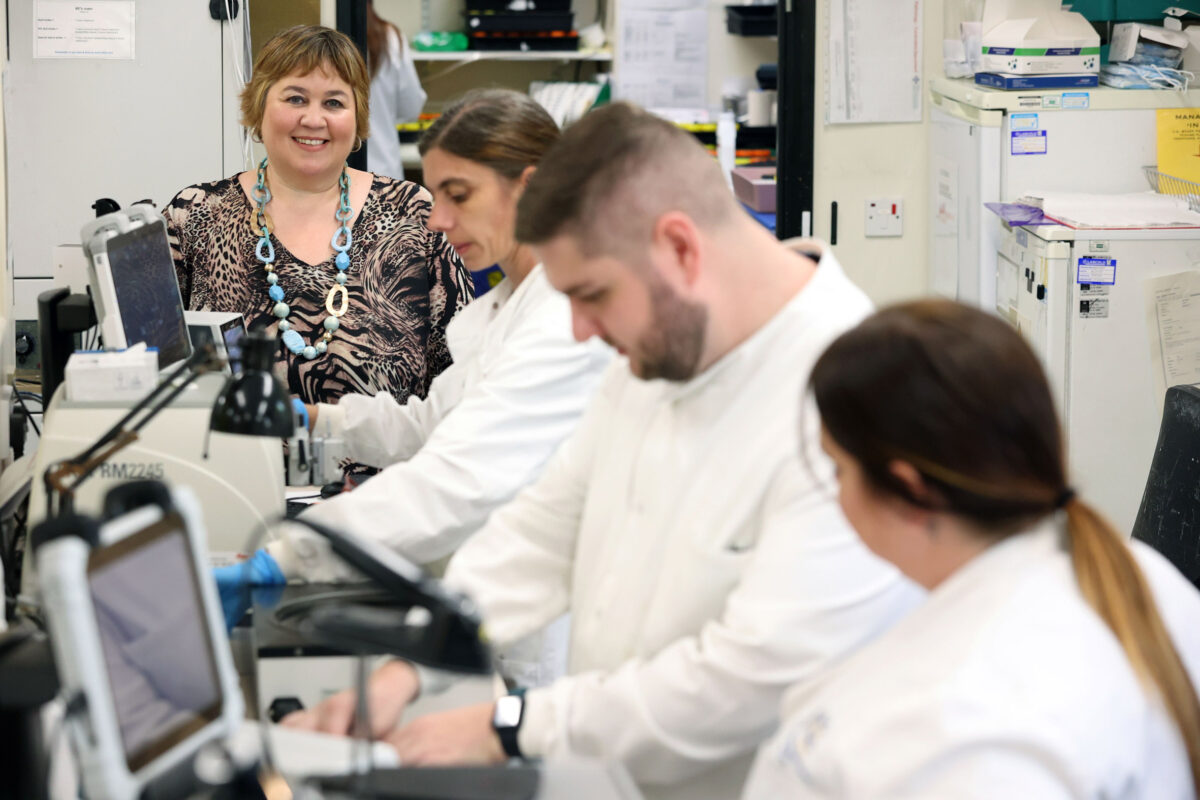Transforming Healthcare Training with Digital OSCEs

The healthcare sector is facing an unprecedented crisis. According to the World Health Organization, there will be a worldwide deficit of nearly 18 million healthcare workers by 2030. This shortage is compounded by the ageing populations in many Western countries, where the proportion of people aged 65 and older is expected to double by 2050. These troubling statistics highlight the critical importance of quickly and effectively training new employees to maintain high standards of care.
In this high-pressure environment, it’s not just about bringing new healthcare professionals into the fold; it’s also about ensuring that existing staff maintain their skills and knowledge. Nurses, for example, typically need to undergo refresher training every two to three years to stay current with the latest medical practices and maintain their clinical competencies.
The pressing need to bridge the skills gap and enhance patient care outcomes demands a fresh approach. Online OSCEs (Objective Structured Clinical Examinations) offer a promising solution, revolutionising healthcare training by providing a scalable, efficient, and effective method to assess candidates. Let’s see how this cutting-edge approach might transform healthcare training.
The Evolution and Challenges of Traditional OSCEs
Objective Structured Clinical Examinations (OSCEs) play a critical role in evaluating practical skills and ensuring high standards of care. Developed in the 1970s, these examinations involve candidates rotating through a series of timed stations where they perform specific tasks or procedures under observation. Each station is designed to evaluate different aspects of clinical competence, such as patient interaction, diagnostic skills, and practical procedures. Examiners use standardised checklists to score performance, ensuring a consistent and objective assessment of each candidate’s abilities.
Over time, the traditional OSCE model has faced several challenges. Logistical complexities, such as scheduling and coordinating in-person evaluations, can be cumbersome and time-consuming. Additionally, potential inconsistencies due to examiner biases and variations in how criteria are applied can lead to unreliable evaluations. Moreover, manual data entry can be error-prone and inefficient, further undermining the reliability of the evaluations.
What Are Digital OSCEs?
Digital OSCEs maintain the in-person format but leverage digital tools to streamline the process. Examiners use mobile devices or computers to input observations and scores directly during the examination. This method retains the benefits of immediate feedback and hands-on assessment while reducing paperwork and increasing efficiency.

Benefits of Online OSCEs for Healthcare
Enhanced Efficiency
In a busy hospital, where time is a precious commodity, streamlining processes is essential. Digital OSCEs allow examiners to input observations and scores directly into mobile devices, cutting down on cumbersome paperwork. This process not only speeds up assessments but also ensures healthcare professionals can devote more time to patient care rather than administrative tasks.
Real-Time Results for Planning and Compliance
Digital OSCEs allow for the instant processing of pass/fail results as examiners input their observations. This immediate feedback is highly beneficial for employers, ensuring that all staff assessments are up to date. This real-time data helps with planning, compliance, and maintaining regulatory standards. Additionally, healthcare professionals benefit by receiving timely feedback, which supports their career development and helps them promptly address any deficiencies. This rapid feedback loop is crucial for maintaining high standards of patient care and ensuring organisational readiness.
Standardisation and Objectivity
Ensuring fair and consistent evaluations is crucial in healthcare. While traditional paper-based assessments also use criteria, online platforms offer a more robust standardisation by automating and streamlining these processes. Predefined digital checklists and rubrics ensure that every candidate is evaluated against the same criteria without the variations that can occur with manual assessments. This level of consistency reduces human error and bias, enhancing the reliability and objectivity of evaluations, and helps all professionals meet the required standards more effectively.
Enhanced Record-Keeping
Digital platforms streamline record-keeping by securely storing all assessment data, including feedback and recordings of the candidate’s performance. This comprehensive digital archive allows easy progress tracking over time and reviewing past assessments. Detailed records are invaluable for both training purposes and verifying competencies in healthcare.
Cost-Effectiveness
Switching to digital assessments brings significant cost savings. By reducing the need for extensive paperwork and physical materials, online assessments are more cost-effective than traditional methods. At a time when healthcare budgets are shrinking, the resources saved can be redirected to other critical areas, such as additional training and development programs, enhancing overall service quality. This efficient allocation of funds ensures that healthcare institutions can continue to provide high-quality care despite increasing financial constraints.
Integration with Advanced Technologies
Digital OSCEs can integrate advanced technologies, like AI for analysing performance patterns and VR for simulating real-life scenarios. For example, platforms like Sentira XR provide immersive VR experiences that allow healthcare professionals to practice complex procedures in a safe, controlled environment. AI can highlight patterns in performance data and offer deeper insights, identifying areas for improvement that might not be immediately obvious. These technologies make the assessment process more insightful and engaging, providing a richer, more comprehensive evaluation of a candidate’s skills and readiness for real-world medical situations.
Key Insights from Research on Virtual OSCEs
While digital OSCEs with in-person examiners retain the hands-on assessment aspect and leverage digital tools for immediate scoring and feedback, virtual OSCEs (vOSCEs) are conducted entirely online. Candidates perform clinical tasks via secure video conferencing, with examiners observing and scoring remotely using digital checklists. Chan et al. (2023) conducted a comprehensive review of studies on vOSCEs to gauge their effectiveness and identify areas for improvement:
Building Confidence: Thorough preparatory support, such as mock exams and detailed guidance, can alleviate candidate anxiety and build confidence, an approach effective for both vOSCEs and digital OSCEs.
Operational Efficiency: vOSCEs improved accessibility and reduced logistics costs but faced issues like internet stability and exam security. For in-person digital OSCEs, focusing on robust technology and secure data management can address these challenges, ensuring reliability and efficiency in assessments.
Assessment Scope: vOSCEs effectively assessed communication and clinical reasoning skills but struggled with physical examination skills. This indicates that while digital tools can enhance certain assessment areas, hands-on skills are best evaluated in-person.
Readiness for Disruptions: The flexibility of vOSCEs during emergencies like the COVID-19 pandemic highlights the importance of readiness for unexpected disruptions. Digital OSCEs should incorporate flexible strategies to maintain high assessment standards under various circumstances.
These insights underscore the importance of integrating best practices from vOSCEs to enhance the reliability and efficiency of digital OSCEs with in-person examiners.

How to Transition to Digital OSCEs
Transitioning to digital OSCEs can significantly enhance efficiency, provide real-time results, ensure standardisation, and improve record-keeping. To ensure a smooth and effective transition, follow these four key steps:
- Evaluate and Select the Right Platform
Begin by assessing the specific needs of your institution and the features offered by various online assessment platforms. Choose a platform that offers a user-friendly interfaces for both examiners and candidates, secure digital record-keeping, and any integrations you require. What’s more, ensure that the platform complies with relevant data protection regulations and standards.
- Train Your Staff
Comprehensive training is essential for a smooth transition. Organise training sessions for examiners and candidates to familiarise them with the new system. These sessions should cover how to use digital checklists, input observations, and access feedback. Continuous support and refresher courses will help maintain proficiency and confidence in using the new tools.
- Implement Standardised Criteria
Develop and integrate standardised checklists and rubrics into the online platform to ensure consistency and objectivity in assessments. These criteria should be clear, measurable, and aligned with the required competencies for each role. Regular reviews and updates will keep these standards current with best practices in healthcare.
- Launch a Pilot Programme and Monitor Progress
Start with a pilot programme involving a small group of candidates and examiners to test the platform. Use this trial period to identify any issues and make necessary adjustments. Gather feedback from participants and monitor assessment outcomes to refine the process. Once the pilot is successful, gradually expand the programme while continuously collecting data and making improvements.
The Future of Clinical Skills Assessment
Digital observational assessments represent a significant advancement in the evaluation and continuous development of healthcare professionals. By addressing the logistical complexities and potential inconsistencies of traditional methods, these digital tools offer a more efficient, scalable, and reliable solution. Leveraging technology not only enhances the quality of assessments but also ensures that healthcare workers remain competent and well-prepared to deliver high-quality patient care.











Responses